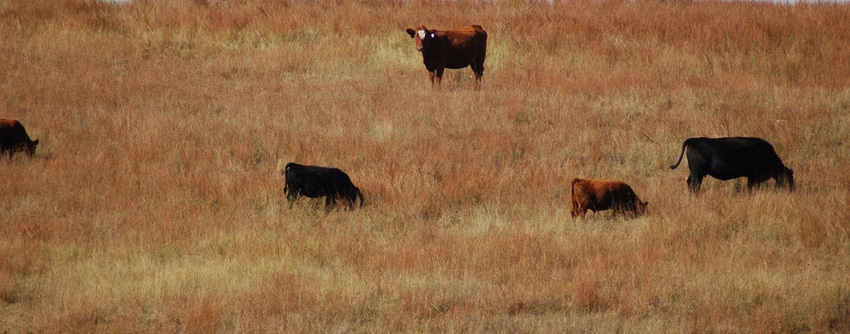July 11, 2016

Prussic acid and nitrates have similar deadly consequences when cattle graze heat/drought-stressed crops or hay, but they are different in their causes and effects.
Prussic acid and nitrates can occur together or separately in any drought-stress situation.
When nitrate is ingested by a ruminant animal, it undergoes a chemical reduction action to nitrite. This reduction is accomplished by rumen microorganisms. Nitrite is readily absorbed into the bloodstream where it oxidizes the ferrous iron of the red blood pigment hemoglobin to ferric iron producing a modified red blood pigment called methemoglobin. Methemoglobin is incapable of transporting oxygen to various body tissues so the animal exhibits a characteristic chocolate-brown blood color prior to and during death which is caused by asphyxiation. Ruminant animals affected in this manner by high nitrate feeds are said to be suffering from methemoglobinemia.
Prussic acid poisoning is actually caused by the formation of hydrocyanic acid. In the plant, HCN is attached to a larger molecule, a cyanogenic glucoside called dhurrin. Dhurrin itself is harmless, as it is simply a compound consisting of a sugar and a non-sugar molecule. However, a two-step enzymatic process results in two hydrolysis products with the final one being HCN. Generally, for this process to occur the plant has to be damaged as the glucosides and degradative enzymes are compartmentally separated within the plant cells. This damage may occur through the chewing action of an animal, a hard freeze where plant cell walls are ruptured, or through mechanical action such as that caused by a swather and its crimpers. Once ingested by an animal, the HCN is released in the rumen and readily absorbed into the bloodstream. HCN does not prevent oxygen from being transported by hemoglobin, but does prevent the body cells from receiving oxygen.
There exist emergency treatments for both problems, and management techniques to minimize problems with both. Drought and frost are two major stressors which can create these problems.
Two publications from Oklahoma are listed in the table accompanying this story, and most state extension services have publications that can help avoid these issues. Here are a few:
You May Also Like




